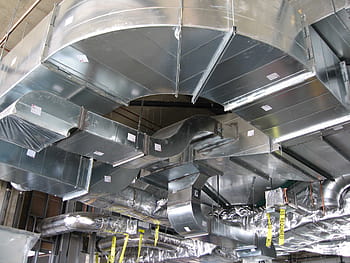Climate Control Revolution: Your Ultimate Guide to Heating and Air Conditioning
Climate Control Revolution: Your Ultimate Guide to Heating and Air Conditioning
Blog Article

When it comes to creating a comfortable living or working environment, few factors are as crucial as effective heating and air conditioning. These systems not only regulate temperature but also play a significant role in maintaining indoor air quality and energy efficiency. As temperatures fluctuate throughout the seasons, having a reliable climate control system becomes essential for ensuring comfort year-round.
The advancements in heating and air conditioning technology over recent years have been remarkable. From smart thermostats that learn your preferences to energy-efficient units designed to reduce your carbon footprint, the options available today can seem overwhelming. This guide aims to simplify the choices, helping you navigate the latest innovations and find the best solutions for your heating and cooling needs. Whether you are considering an upgrade, a new installation, or simply want to learn more, this comprehensive resource will equip you with the knowledge you need to make informed decisions.
Understanding HVAC Systems
HVAC systems, which stands for heating, ventilation, and air conditioning, are essential for maintaining a comfortable indoor environment. These systems work together to regulate temperature, humidity, and air quality within residential and commercial spaces. The heating component typically involves furnaces or heat pumps that generate warmth, while the air conditioning part relies on chillers and air handlers to cool and dehumidify the air. Properly functioning HVAC systems enhance comfort and can also contribute to energy efficiency.
The ventilation aspect of HVAC systems plays a crucial role in ensuring that fresh air circulates throughout a building. This process helps remove stale air, odors, and indoor pollutants, promoting healthier indoor air quality. Ventilation can be achieved through various methods, including natural ventilation, mechanical systems, and central air handling units. Each method has its advantages, and the choice often depends on factors like building design, climate, and energy efficiency goals.
Understanding how these systems operate and interact is vital for both homeowners and business owners. Regular maintenance and timely upgrades can significantly improve the performance of heating and air conditioning systems, leading to lower energy bills and increased comfort. Being informed about HVAC technology helps individuals make better choices regarding system selection, installation, and care throughout the lifespan of their heating and air conditioning systems.
Affordable Heating Solutions for Homes
Energy Efficiency Tips
Improving energy efficiency in your heating and air conditioning systems can lead to significant savings on your energy bills. One of the simplest ways to enhance efficiency is through regular maintenance. Make sure to change or clean your filters every month, as clogged filters restrict airflow and force your system to work harder. Scheduling annual professional inspections will also help identify any issues before they become costly repairs.
Another effective strategy is to invest in programmable thermostats. These devices allow you to set specific temperatures for different times of the day or week. By adjusting the temperature when you are not home or while you are sleeping, you can optimize your energy usage without sacrificing comfort. Many modern thermostats even learn your habits over time, automatically adjusting to keep your home comfortable while conserving energy.
Additionally, consider improving your home's insulation and sealing any air leaks around windows and doors. Good insulation helps maintain the desired temperature inside your home, reducing the workload on your heating and cooling systems. Using weatherstripping or caulking can seal gaps, while adding insulation in attics, basements, and walls can further enhance your energy efficiency. Together, these measures can create a more comfortable indoor environment while being kinder to your wallet and the planet.
Future Trends in Climate Control
The future of heating and air conditioning is leaning towards smart technology integration, allowing for more efficient and user-friendly climate management. Innovations such as smart thermostats and home automation systems enable homeowners to control their systems remotely, adapting the temperature according to their schedules and preferences. This not only enhances comfort but also contributes to energy conservation as systems can be programmed to operate during off-peak hours or when efficiency is maximized.
Sustainability is becoming a central theme in the evolution of climate control solutions. With increasing awareness of climate change, manufacturers are focusing on environmentally friendly alternatives. This includes the use of renewable energy sources, such as solar-powered heating and cooling systems, as well as the development of high-efficiency HVAC units that consume less energy. Consumers are more inclined to invest in systems that not only meet their comfort needs but also reflect their commitment to sustainability.
Finally, the integration of artificial intelligence in heating and air conditioning systems is anticipated to revolutionize how we manage indoor climates. AI can analyze data from various sensors, weather forecasts, and user habits to optimize system performance dynamically. This not only improves comfort levels but also reduces energy waste, making climate control more efficient than ever. As technology continues to advance, the future of indoor climate management holds great promise for both consumers and the environment.
Report this page